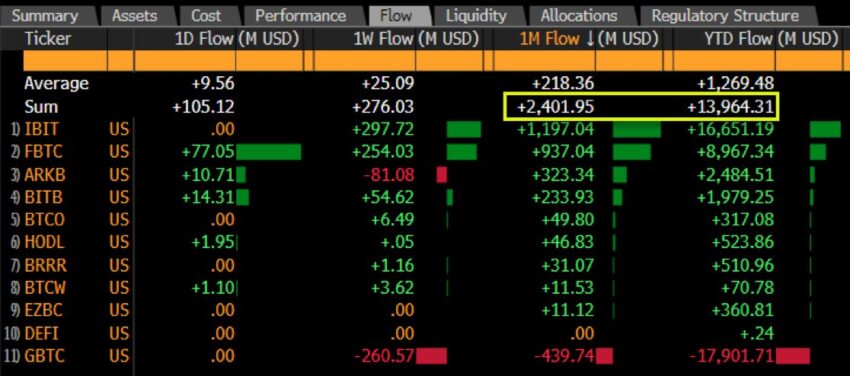2024-9-5 02:04 |
Bitcoin is at $58,050, 2.4% down from seven days ago, and yes, still stuck in the same range it has been in since February.
Source: BNC Bitcoin Liquid Index
Bitcoin investors, fatigued by the prolonged sideways price action, were initially optimistic about a potential bull run triggered by the Federal Reserve’s expected interest rate cuts this month.
However, escalating recession fears might yet prompt a deeper market correction wrote Bitfinex analysts this week. They predict that Bitcoin (BTC) could see a drop of 15%-20% if the rate cut coincides with a recession, potentially pushing prices down to the $40,000-$50,000 range.
The analysts explained that while rate cuts are generally positive for risk assets, a 25 basis point reduction could signal the start of a typical easing cycle, potentially boosting BTC prices long-term as recession worries diminish. This would indicate the Fed’s confidence in the economic outlook, possibly averting a harsh downturn. Conversely, a more aggressive 50 basis point cut could initially spike BTC prices by 5%-8%, but these gains might be short-lived as recession concerns could quickly negate the rise.
On Tuesday, U.S. spot bitcoin exchange-traded funds experienced continued net outflows, marking a significant downturn in investor sentiment. Data from SosoValue revealed that 12 spot bitcoin ETFs saw a collective withdrawal of $287.78 million, the highest since May 1. BlackRock’s IBIT, which leads in net assets, recorded no changes in flows for the day.
Grayscale’s GBTC, the runner-up in size, witnessed outflows of $50.39 million. Fidelity’s FBTC saw the most significant withdrawals, with $162.26 million exiting the fund. Both Ark and 21Shares’ ARKB, along with Bitwise’s BITB, also experienced notable outflows, totaling $33.6 million and $24.96 million, respectively. Other ETFs managed by firms like VanEck, Valkyrie, Invesco, and Franklin Templeton reported smaller losses.
These substantial outflows occurred against the backdrop of a broader market sell-off, driven by disappointing ISM manufacturing data in the U.S., which indicated a contraction with a reading of 47.2% for August, albeit a slight improvement from July.
Bearish SeasonalityHistorically, September has shown to be one of the weakest months for crypto, adding another layer of complexity to the investment landscape. This month is in fact, the worst for Bitcoin in terms of seasonality. Despite this, 2015, 2016, and 2023 data show that Bitcoin’s price was able to see surges in September as well, of 2%, 6%, and almost 4% respectively.
As revealed by the historical price moves of Bitcoin, from 2013 until 2023, September was bearish for BTC, apart from the three exceptions mentioned above. Even if, overall, BTC’s seasonality shows that this month has been the worst for the digital asset, history might not necessarily repeat itself. This month’s potential rate cuts by the Federal Reserve could provide a break from this trend, enhancing Bitcoin’s appeal as a store of value amidst increased dollar liquidity. Here’s hoping.
Source: X
Recently, the Crypto Fear & Greed Index, a barometer of market sentiment towards Bitcoin and other significant cryptocurrencies, dipped into deep “fear” territory, registering a low of 26 out of 100. This index measures market enthusiasm, where zero indicates extreme fear and 100 signifies extreme greed. The positive from this signal, is that the lower the fear signal, the more likely it is we are close to a local bottom.
Source: Crypto Fear & Greed
However, the facts are clear. This cycle is the longest it has taken for Bitcoin to reach a new all time high. Bitcoin is experiencing this prolonged period before reaching a new all-time high following its latest halving, wrote prominent trader Peter Brandt. In his analysis on X, Brandt pointed out that Bitcoin’s 2021 peak of $69,000 still holds as the record high when adjusted for inflation.
Bitcoin’s Lack of EnergyBrandt labeled Bitcoin’s recent price behavior as suffering from a “lack of energy,” highlighting the frustration among bulls and new investors due to the inability to surpass the $73,800 mark achieved in mid-March. Despite the long passage of time since the last block subsidy halving in April, Bitcoin has yet to embark on a new phase of price discovery, marking a record duration without significant price movement since that event.
Brandt takes a unique approach to analyzing Bitcoin cycles, starting each cycle at the previous bear market low, which in this case was in November 2022, and tracking to the high of the cycle that started at the previous low before the halving in March 2024. He notes that not only has this recent high remained unbroken, but also that the high from the previous bull cycle remains intact on an inflation-adjusted basis. While this perspective underscores the $69,000 peak from 2021 as a significant resistance level, Brandt also clarified in later discussions that this does not necessarily imply that Bitcoin has been in a downtrend since that peak.
Howard Lutnick, CEO of Cantor Fitzgerald, wrote on X that traditional financial companies are keen to engage with Bitcoin as a new asset class but are constrained by current U.S. regulatory demands. Lutnick described Bitcoin as a newcomer in the traditional finance (TradFi) sector that is just beginning to engage with the global financial system.
He explained the regulatory hurdles, noting, “If a bank were to hold your Bitcoin, they would need to set aside an equivalent amount of their own funds, effectively ‘locking’ that money away. This is a major deterrent.” He suggested that with a more favorable regulatory framework, traditional financial institutions would eagerly integrate Bitcoin into their operations.
In addition to his role at Cantor Fitzgerald, Lutnick has also been involved in political circles, having been appointed by Donald Trump, a pro-crypto Republican candidate, to chair his presidential transition team. Under Lutnick’s leadership, Cantor Fitzgerald is advancing its involvement in the cryptocurrency space, planning to launch a bitcoin financing business with $2 billion dedicated to lending, aiming to provide leverage to bitcoin holders. This initiative builds on its existing operations, which include trading U.S. Treasury securities in partnership with stablecoin issuer Tether. According to Lutnick, Cantor Fitzgerald holds a significant amount of Bitcoin and is poised to expand its cryptocurrency services.
Trump Back in the LeadOn the betting platform Polymarket, election bettors are increasingly favoring Republican candidate Donald Trump, as Democrat Kamala Harris sees a decline in her odds, dropping to 47% from previously even odds over the weekend. Recent weeks have seen a downward trend in Harris’ appeal among Polymarket traders, while Trump’s support has risen above 50%, placing him in the lead after a period of parity lasting nearly two weeks.
The market has recorded $99 million in bets backing Trump and over $95 million supporting Harris. Harris’ slipping odds are linked to backlash against her proposal to tax unrealized gains for individuals with a net worth exceeding $100 million. Conversely, Trump’s rising odds correlate with his promotion of a new decentralized finance initiative promising high yields for cryptocurrency users. However, as the world learns more about World Liberty Financial, more concerns are being raised.
Similar to Notcoin - Blum - Airdrops In 2024
Bitcoin (BTC) на Currencies.ru
|
|













